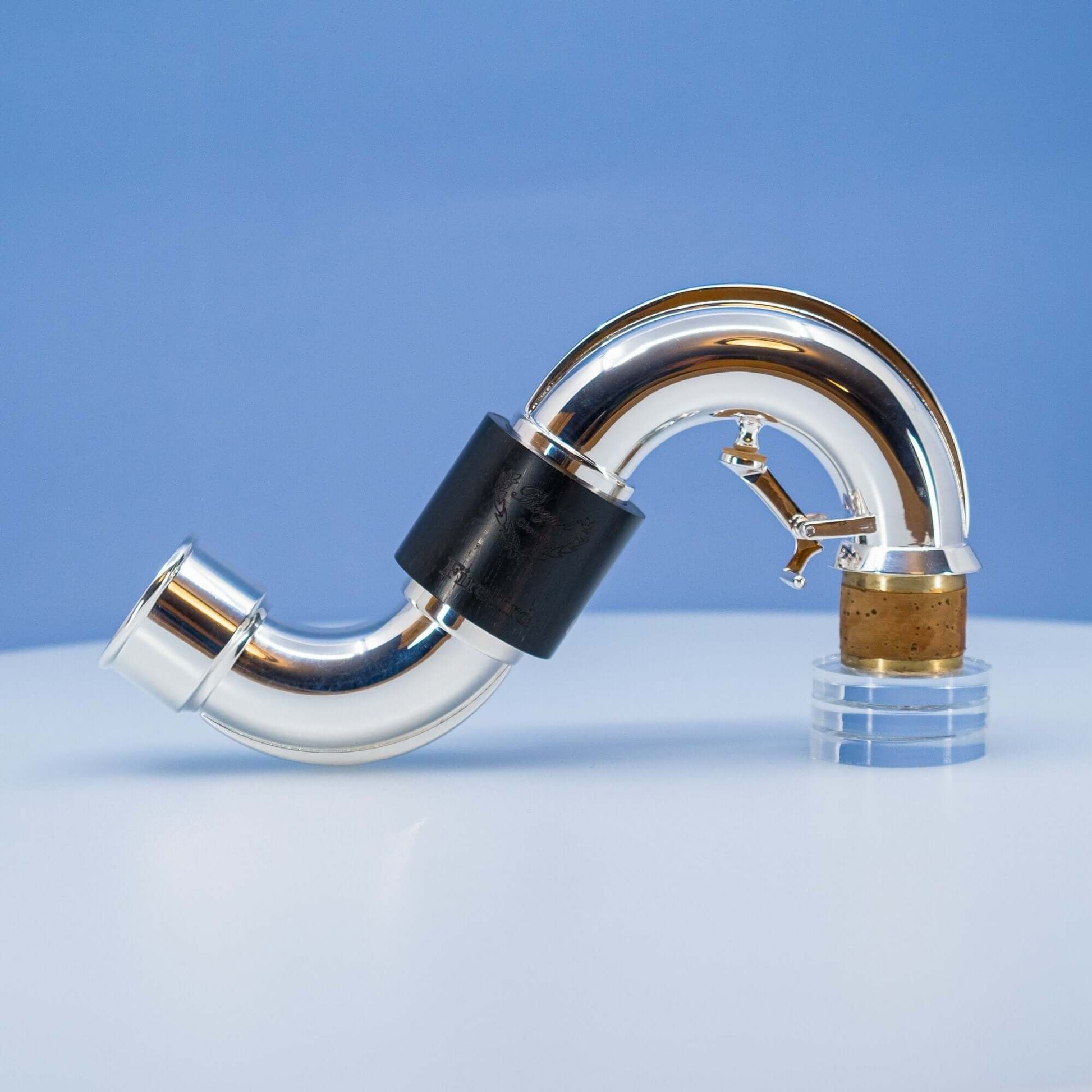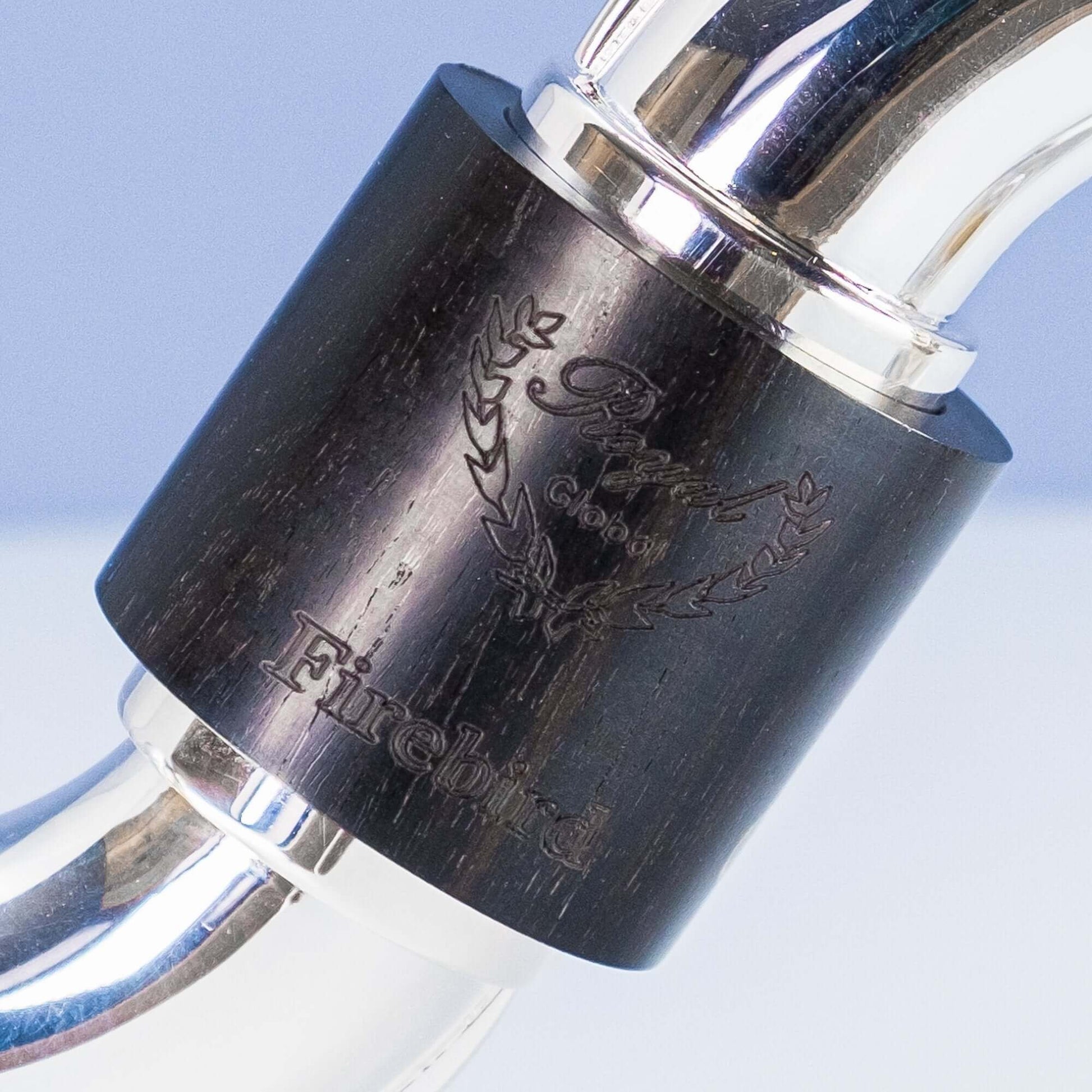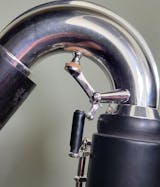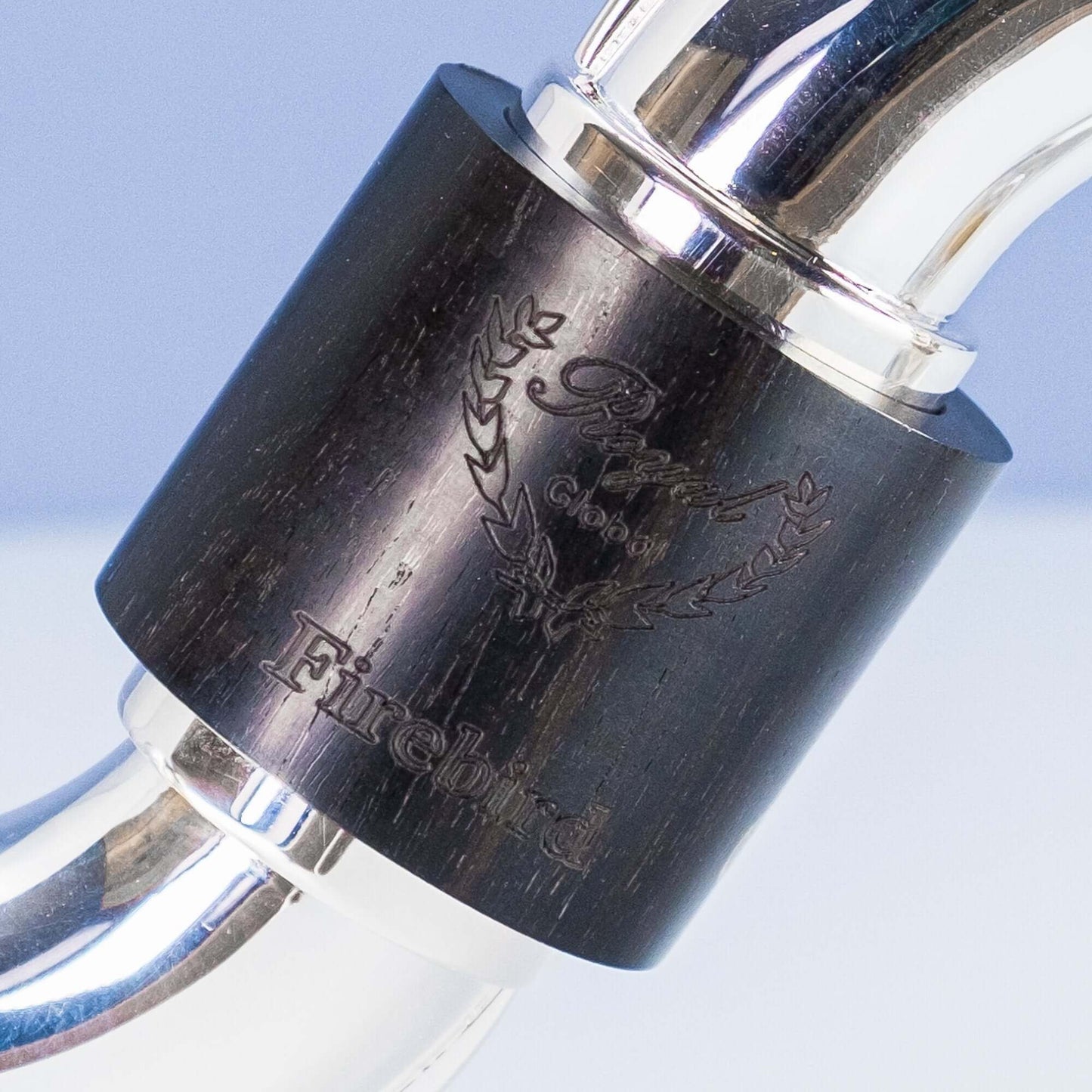Alignment instructions.
This is your last warning: if you do not feel comfortable bending metal on your bass clarinet, find someone who does this for a living. (Or at least someone who is comfortable!)
Step 1.
Put the neck on your bass clarinet. Note the Register Key Rod where the top joint extends up to overlap the neck’s register key mechanism. If it has a small gap, you’re done! No need to make any adjustments.

Step 2.
If there is no gap, what is probably now happening is that you will see the register key on the neck slightly open. Therefore we need to gently bend the Register Key Rod ever-so-slightly away from the bass clarinet. Remove the neck from the top joint and set aside. Place the body of the instrument in your lap, and grasp the Register Key Rod between your thumb and forefinger. The metal is fairly soft, so do not expect a lot of resistance. Again, be gentle — you can always bend more, and it’s much worse to bend the rod back and forth, because it weakens the solder joint. If it is too difficult for you to bend with your bare hands, you may want to use a small pliers. Do NOT use a pliers with a serrated jaw—use only smooth-jaw or nylon jaw pliers. These can be found on Amazon for under $10 and are a useful tool for your toolbox.
Note - if you use pliers on any plated metal on your instrument, be sure to put a cushioned cloth between the pliers and the metal you are gripping, or you will scratch the plating. For this register key rod, it’s not an issue, because it’s already covered in plastic.

Step 3.
Put the neck back onto the bass clarinet. Check the gap; it should be about 1-2 millimeters. One easy way to tell if it’s large enough is if 2 playing cards fall out but 3 or 4 can be held between the two keys. Any larger than that, and the gap is too large.







